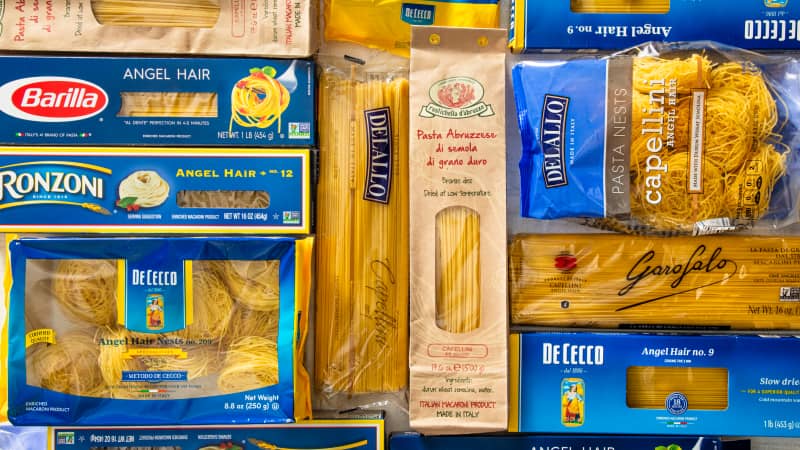Spaghetti
Taste Test
Angel hair is underappreciated. Success with these thin strands starts with buying the right product.
Published Apr. 15, 2020. Appears in America's Test Kitchen TV Season 22: Italian-Inspired Dinners

Few pasta shapes are more divisive than angel hair. Angel hair (or capellini, the Italian word for “little hairs”) is a rod-shaped pasta approximately the same length as spaghetti and vermicelli but much thinner. It’s this thinness that has somehow inspired vitriol, with major food publications penning think pieces with snide titles such as “You Couldn’t Pay Me to Eat Angel Hair” and “Lebron James Hates Angel Hair Spaghetti and He’s Not Wrong.”
We think angel hair doesn’t get the respect it deserves. For starters, its uniquely thin strands—the thinnest of Italian pastas—are light but still substantial; twirl effortlessly around forks; and cook quickly (as quickly as 90 seconds versus 8 to 12 minutes for spaghetti), making it a good option for a fast weeknight meal. Angel hair has more surface area per pound than any other strand pasta, so you get more sauce in each bite. And we’ve found that pairing it with a potent sauce thinned out with a bit of pasta cooking water reduces its tendency to tangle and clump.
To find the best angel hair pasta, we sampled eight products, priced from about $1.50 to about $5.50 per pound. Six of the products were sold as long, rigid strands, but we also included two products that were shaped into nests before being dried. We sampled them cooked al dente and tossed with neutral-tasting canola oil to prevent sticking and in our recipe for Angel Hair Pasta with Basil, Caper, and Lemon Sauce.
Our tasters liked the flavor of all the products we tried. Every pasta had a “neutral,” “mild” flavor with no aftertaste or off-flavors. A few highly ranked products stood out for their “nuttiness” or slight “wheaty” flavor, which tasters said provided a bit of complexity, but all the pastas had a “mellow” flavor that was a “clean” canvas for sauce. As it turned out, texture was much more divisive.
In both tastings, we preferred the products sold as strands to those formed into nests. Nested angel hair tended to break apart more than strands did, even before cooking. When we measured and compared the lengths of both types of angel hair after cooking, nest pieces were shorter and less consistent in length, which resulted in more tangles of pasta and fewer twirlable strands. The nested angel hairs also came in 8.8-ounce packages, so we’d have to buy two in order to make a recipe that calls for a pound of pasta.
Nests and strands aside, the textures of the pastas ranged from chewy and distinct to soft and sticky, even when we carefully controlled for cooking time and doneness. In general, tasters preferred thicker strands, wh...
The mission of America’s Test Kitchen Reviews is to find the best equipment and ingredients for the home cook through rigorous, hands-on testing.

This is a members' feature.